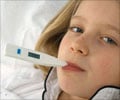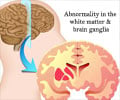
To further investigate JME outcomes and predictive factors, Dr. Felix Schneider and colleagues from the Epilepsy Center at the University of Greifswald in Germany studied data from 12 male and 19 female patients with JME. All participants had a minimum of 25 years follow-up which included review of medical records, and telephone or in-person interviews.
Sixty-eight percent of the 31 JME patients became free of seizures, and 28% discontinued AED treatment due to seizure-freedom. Significant predictors of poor long-term seizure outcome included: occurrence of generalized tonic-clonic seizures (GTCS - formerly known as grand mal seizures) that affect the entire brain and which are preceded by bilateral myoclonic seizures (abnormal movements on both sides of the body and a regimen of AED polytherapy.
Researchers also determined that remission of GTCS using AED therapy significantly increased the possibility of complete seizure-freedom. However, once AED therapy is discontinued, the occurrence of photoparoxysmal responses (brain discharges in response to brief flashes of light) significantly predicted an increased risk of seizure recurrence.
"Our findings confirm the feasibility of personalized treatment of the individual JME patient," concludes Dr. Schneider. "Life-long AED therapy is not necessarily required in many patients to maintain seizure freedom. Understanding the predictors for successful long-term seizure outcome will aid clinicians in their treatment options for those with JME."
Source-Eurekalert














